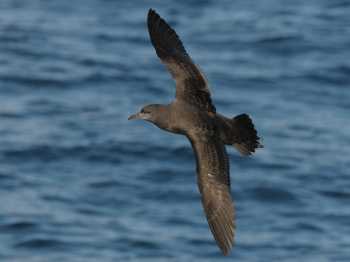Rosemary Clucas (Mathematics and Statistics Department, University of Otago, New Zealand), writing in the journal Ecological Applications, has analysed catch diaries of mutton-birders exploiting chicks of the Sooty Shearwater Puffinus griseus, an ACAP potential candidate species.
The paper's abstract follows:
"The annual hunt of Muttonbirds (chicks of the Sooty Shearwater, Puffinus griseus), undertaken by the Rakiura Māori people of southern New Zealand, is economically and socially integral to their cultural identity. Muttonbirders concerned at ensuring that the hunt remains viable for coming generations have provided catch records to help ascertain historic trends in hunt success. Analysis of eight catch diaries for a 67-year period demonstrates considerable consistency across diaries in the variability of hunt success, as measured by annualized mean daily hunt tallies. A conservative estimate of the overall annual decline in hunt success is -1.89% (95% CI: -1.14% to -2.65%). Birders' observations of a changing relationship between chick quality and hunt success was evidenced across diaries. Reduced hunt success from the 1990s indicates that possible adult "knockdowns" and/or sustained substantial reductions in breeding proportions have occurred. Chick size has remained constant, suggesting little change in the provisioning environment. Catch per unit effort data, provided by a single diary, confirms a link between variability in annual hunt success and chick abundance. The Pacific Decadal Oscillation (PDO) and the Southern Annular Mode (SAM) are correlated with hunt success and chick size, respectively. Interannual PDO+ (or PDO-) values are correlated with higher (or lower) tallies, whereas SAM+ (or SAM-) values are associated with larger (or smaller) chick size. Uncertainty in the relationship between the breeding Sooty Shearwater population, chick catch, and environmental perturbation in their feeding grounds could be reduced with the inclusion of hunt time in all diary records. Ongoing prolonged decline in a top-trophic-level predator such as the Sooty Shearwater raises serious concern that long-term oceanic changes have been occurring and that long-term sustainability of muttonbirding is in doubt."
Reference:
Clucas, R. 2011. Long-term population trends of Sooty Shearwater (Puffinus griseus) revealed by hunt success. Ecological Applications 21:1308-1326.

John Cooper, ACAP Information Officer, 13 July 2011

 English
English  Français
Français  Español
Español